Isaac Mizrahi Looks Back on "Unzipped" 25 Years After Its Premiere
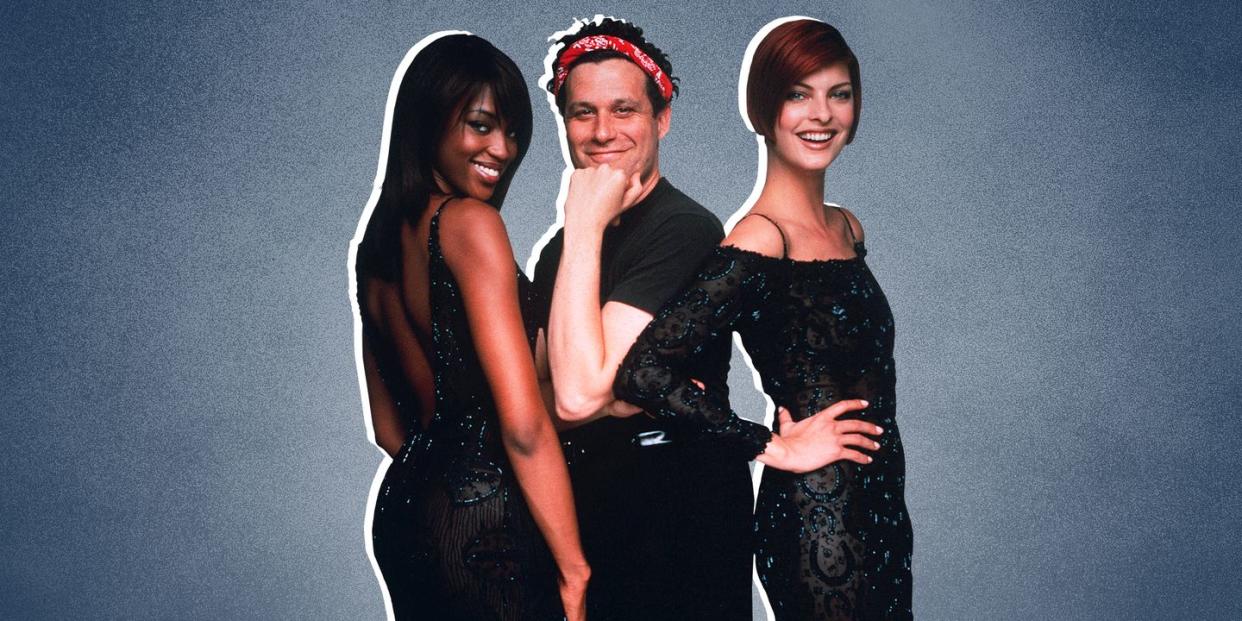
It’s tempting to use the occasion of the 25th anniversary of the release of Isaac Mizrahi's Unzipped as an excuse to eulogize the good 'ol days of fashion and lament its current dismal, disrupted state.
Indeed, the film, which chronicles Mizrahi’s creative and emotional journey from a flop 1994 spring collection to a triumph of tundra chic for the following fall, is a time capsule of a giddy, glamorous, intoxicating era long gone. It is populated by the original supers— Naomi, Cindy, Christy, Linda, Kate, Shalom—members of Mizrahi’s arty entourage like Sandra Bernhard and Mark Morris, and legendary editors such as Candy Pratts Price and Polly Mellen who deliver proclamations—“Be careful of makeup!”, “Fussy, finished!”—who on any other planet would be considered silly, but, here, are revered, their declarations intoned and embraced with total seriousness. Unzipped is a snapshot of the fashion world that made many of us working in the industry want in.
But nostalgia is anathema in fashion. Instead, after the most surreal, unprecedented and mostly virtual fashion month ever, let’s appreciate Unzipped, directed by Mizrahi’s then-boyfriend Douglas Keeve, as a bellwether, one that anticipated the future of designer as quippy, camera-ready celebrity, the unquenchable thirst for a glimpse behind the scenes—hello, “To scrim or not to scrim”—and, ultimately, the democratization of a once ultra-elite world. Mizrahi saw it all coming.
The designer checked in from Bridgethampton, where he’s spent the past few months working on a novel, his QVC collection, a sequel to Peter and the Wolf and binging Babylon Berlin, to look back at a more innocent time, and look forward at where fashion is heading. If anyone knows, it could be him.
I watched Unzipped again for the millionth time last night. When was the last time you watched it?
Seriously, all the way through? I guess about two years ago. I was studying it for this one particular reason and I watched it all the way through. It's funny, because while we were shooting it, I kind of understood that I would someday be looking back on it. I never saw my life as this linear thing. I always see it as this event that's going to end eventually. I don't see history in a year at a time, I see it in 100 years at a time. If you read a lot, if you look at a lot of movies, if you do a lot of museums and stuff, you end up not really thinking just about time as a linear thing. You think about it in chunks. Even while it was being made, I was looking back upon it. I was very unconscious of being observed like that. I still am. I'm giving you this big preamble because it makes me feel old. While it was being made I was thinking, "God, imagine when you're old looking at this." Even as unconscious as I am about the passage of time, or whatever, this makes me really aware of the passage of time. It really does.
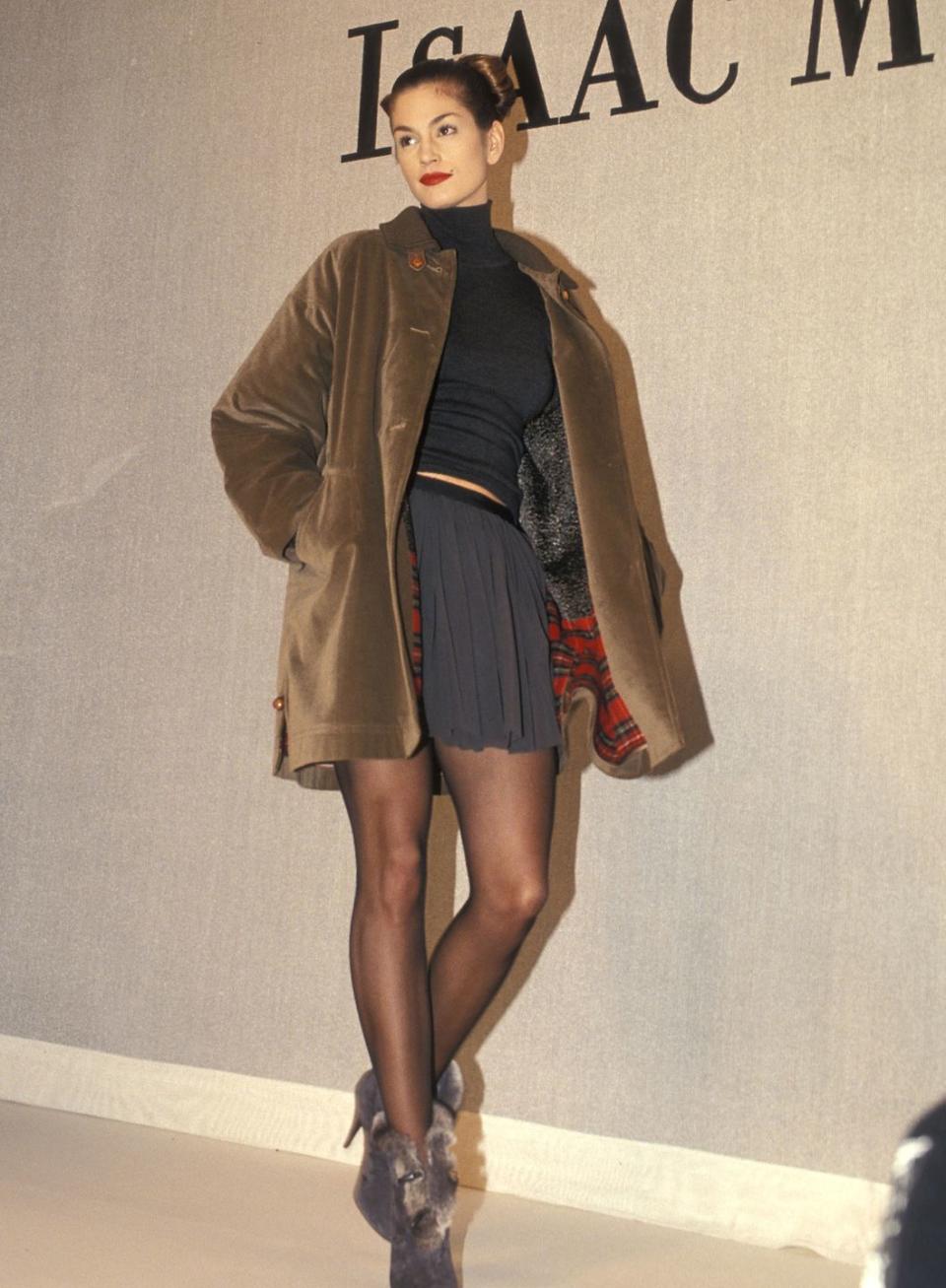
What’s it like looking back on that whole fashion moment and how it plays against current times?
Well, it was a completely different intention. In those days, there had not already occurred this crazy kind of explosion of drag influence on fashion and this incredible kind of fetish-y thing. This was slightly before Alexander McQueen blew it all up. Since then, nothing's really happened. People have tried to bring it back but they can't. It's like, that's what's happened. But before that, there was a whole other kind of reason for dressing. It wasn't just visual. It was emotional. It was spiritual. It was intellectual. And now, it's incredibly, incredibly two dimensional. And it's great. But it's a whole other thing. There used to be a whole sort of intellectual thing about fashion that I think is gone. There is nothing intellectual about fashion anymore, I don't think. And that's not bad. That's sort of a classic. It's like, when you go back to the '50s, the fashion wasn't very intellectual in 1950s. In the '60s it started going very deep, and very dark, and very sort of counterculture, the whole counterculture thing about the '60s. And then in the '70s, it just went away. People didn't wear bras. They had no shape. They wore big crepe de chine shirts with trousers and people looked great in a different kind of new way. And then the '80s happened and everybody went crazy and they teased their hair and they wore shoulder pads, right? And then, in the '90s it became this kind of thing about empowered women. That's why I think the supermodels kind of happened in the 1990s, right? Because women weren't just wearing clothes. They weren't just looking like each other. I'm not kidding. I was as influenced by those supermodels as they were by me. It became this dialogue. They were very powerful women.
They had personalities.
Since then, other things have taken center stage for women to think about. Fashion just isn't what it used to be. It's a very, very small population of people that actually follow runway shows and actually know what they're supposed to be buying. It's a very one-on-one kind of business, which I think is great. I mean, I think that's a real couture way of doing things. And I think that's probably going to even get more intensely true as we get past COVID, right? I think the designer thing is going to happen even more and it's not just going to be 3,000 fashion shows in two weeks. It's going to be these small, quiet little businesses that make these incredibly beautiful, and smart, and artisan. It's going to become artisan.
It could almost reset and eventually get back to how it was the '90s, when everybody was so excited. That’s the thing that comes through in Unzipped — how fun it was. Do you think of that moment as fun?
I do think of it as fun. It was my early adulthood, it was really fun. And by the way, it was privacy in those days. It wasn't social media. People did things that were transgressive. We fought to be transgressive. We fought to be sort of dirty and do dirty, bad things. And now, you can't. You just don't. It's not right to do that. Everybody gets very, very upset or takes it very, very personally if you do something transgressive. You have to do everything by the book. And I get that; I completely understand. Because I think not everybody can handle that. Because you give someone an inch, you give someone who is abusive an inch and they take the whole thing. I remember if you showed clothes that were influenced by S&M or something, it was meaningful. It wasn't just a visual joke. It was like, "Oh my God, really? Wow. That's edgy." And we fought for that kind of thing and we really communicated about that stuff. And it was kind of under the radar, underground. And now suddenly it's like, everything at once and nothing's meaningful. It's all air quotes. And so, it's a post-post-post-post-post-modernism that I sometimes don't exactly understand. But that's because I'm old. I'm not supposed to understand it.
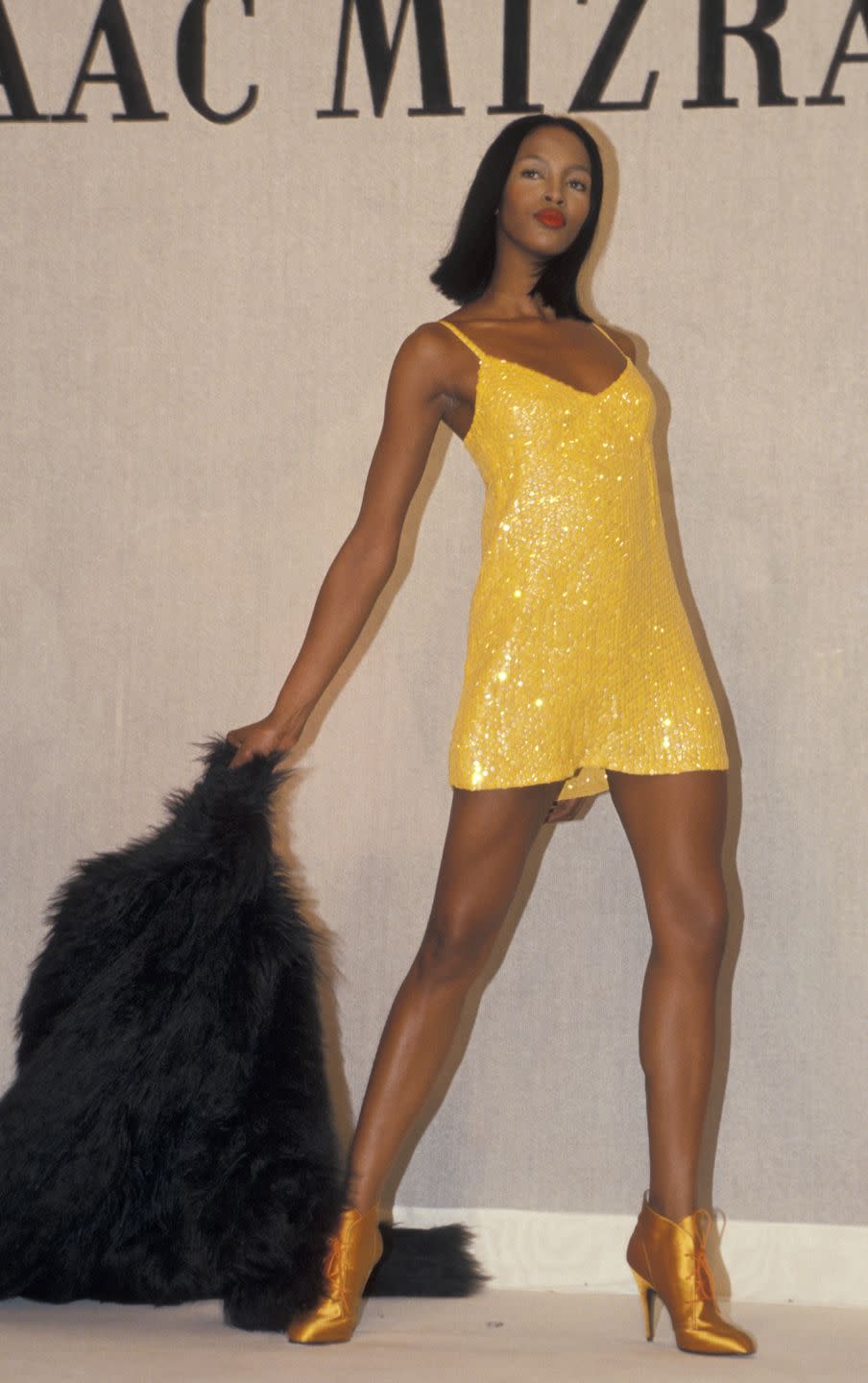
You’re not that old.
But about that time, about those fashion shows, right? There had been these spectacular fashion shows in Europe in these grand places. And what I was trying to do was kind of match those fashion shows inch for inch, but do it in an American way. I didn't want to do Claude Montana or Thierry Mugler. That just didn't feel relevant to me. That women felt incredibly beautiful, but very fussy, and very kind of overly made up, and overly thought through. I like a person to be a little bit more casual and thrown together and still very dressy. That's what I like. I like a person in flats way more than I do in fetish shoes, I just do personally. I feel uncomfortable when a woman can't walk in heels. And, by the way, I love heels. Because they're a joke. It's like, "Come on, are you really wearing those heels?" And then the answer is, "Yes, because it's fun." Not because you have to.
Unzipped was a harbinger of what was to come in fashion in many ways. The idea of fashion documentaries and behind-the-scenes. One of the big plot lines is using the scrim for the show and girls not wanting to be seen changing by the audience. Meanwhile, now, every model documents every second of her life, and posts it on Instagram. Then, you were using fake fur in the show and fake fur is everything now. You went on to do Target and QVC and kind of invent high-low fashion. In many ways you really saw the future. What do you think about what’s going on now? Fashion is having a moment of reckoning. How did it get here and where is it going to go?
I mean, I do wonder who the end customer is. Because if you tell me that it's my children or the House of Mizrahi, I would say, "You're right." If you tell me it's like the four or five shoppers who meet me for a trunk show at Bergdorf Goodman, I would tell you, "You're right." But otherwise, I don't exactly know who is out there looking like that. I see them kind of in cocktail dresses with a little bit of embroidery, tight, with spanks and high heels and mad hair, big, big, big hair, and a lot of makeup. And I go, "Really? That's what they do?" In the '90s, we were starting to get somewhere when I saw a white shirt with a ballgown, or a t-shirt with a ballgown. She was wearing the t-shirt all day and she's like, "Oh, right. I forgot I have to go to this thing, let me throw on a ballgown.” It looks amazing. To me, that's what style is about. I’m not a minimalist.
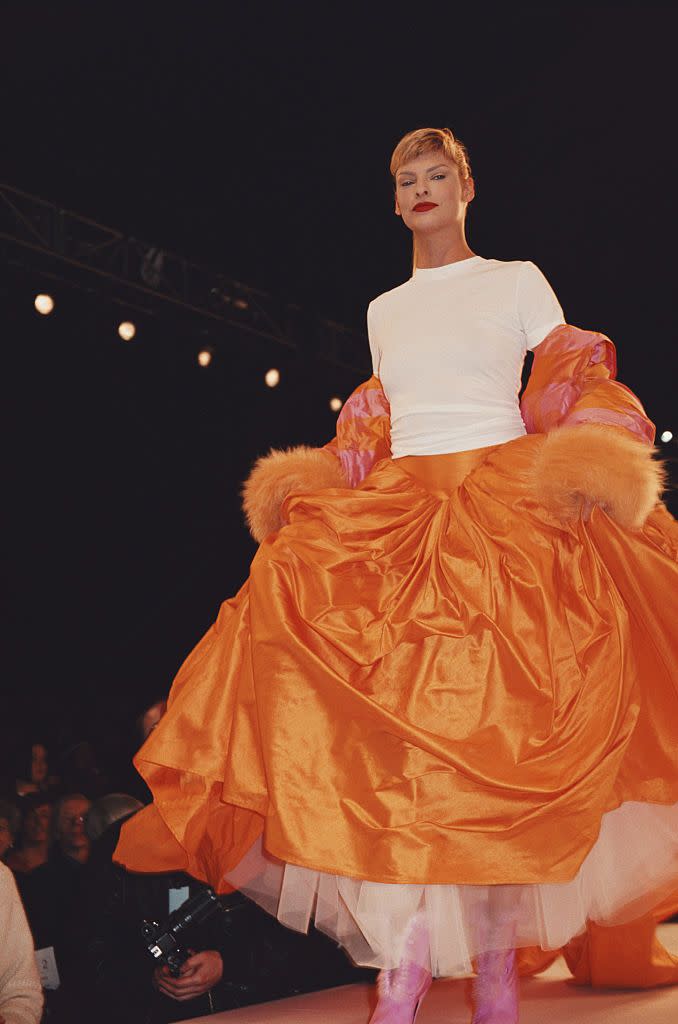
It’s also like in literature. I'm reading a lot these days. I'm reading Truman Capote, I'm reading Answered Prayers. I'm thinking to myself, "He's not a minimalist, but he's very, very paired down. And it's viscously stylish." Every single word has a kind of tension. And I feel like, that's what's going to happen. It's like, living quarters are smarter, people are smarter, right? Every piece in your closet is going to have to make sense from now on, whether it's a T-shirt that you launder three times a week, or a couture kind of double-faced cashmere coat with embroidery and fur trim. My one criticism of the world at large is about disposable fashion. Because it could be a $50,000 gown, but you wear it once. And that's bullshit, that's absolute bullshit. And by the way, nobody buys a $50,000 gown and wears it once. I mean, unless you're somebody who does that. But people borrow these dresses, right? Am I right? You borrow something and you wear it and it's not yours. I mean, I don't believe in that. I don't agree with that.
A lot of that was going on before Instagram and digital everything.
I know, I know, I know. Except, you know what, darling? When I was a kid in the '90s during that Unzipped thing, I didn't invite Robert De Niro to my show. He wanted to come because he liked shows. He's like, "Oh, this is fun." He showed up, and Liza showed up, and Madonna showed up. I didn't pay people to come to my show. Now, you pay celebrities to go to shows. It doesn't mean anything. That means nothing. By the way, the only reason I did that show that way with the scrim was because personally I was having a big conflict with what everybody else was showing at that moment.
How so?
It was a heroin chic moment. And I was like, "Really? Is that the best we can do? Bad girls doing heroin and being so skinny and so pathetic?” I just didn't think it was a good image with a strong womanly message. I thought, "Interesting, fetishistic, weird. Why are people so obsessed with that?" I never got that. I don't get the too-skinny thing. I don't get the little, tiny thing. Here I am doing these robust, almost bodacious things on these women like Cindy [Crawford] and Linda [Evangelista]. I thought, "How can I actually just tear it apart and get their attention and make them look at something beautiful, as opposed to something skanky?" Because it was a skanky moment, it really was. I'm sorry, I just won't do skanky stuff, I can't bring myself to do it. So, I did the thing where I thought, "Oh, maybe if they see them getting dressed in this kind of wonderful way. You see this girl putting herself together, putting on one thing, and then another thing, and then another thing, and—boom—she's all done." That was the idea behind that show. And I think it did resonate that way. After that, there were more photographers backstage than there were in front of the stage watching the show. Suddenly every editor wanted a backstage story. And there were definitely backstage stories before. I'm not saying I invented the backstage story.
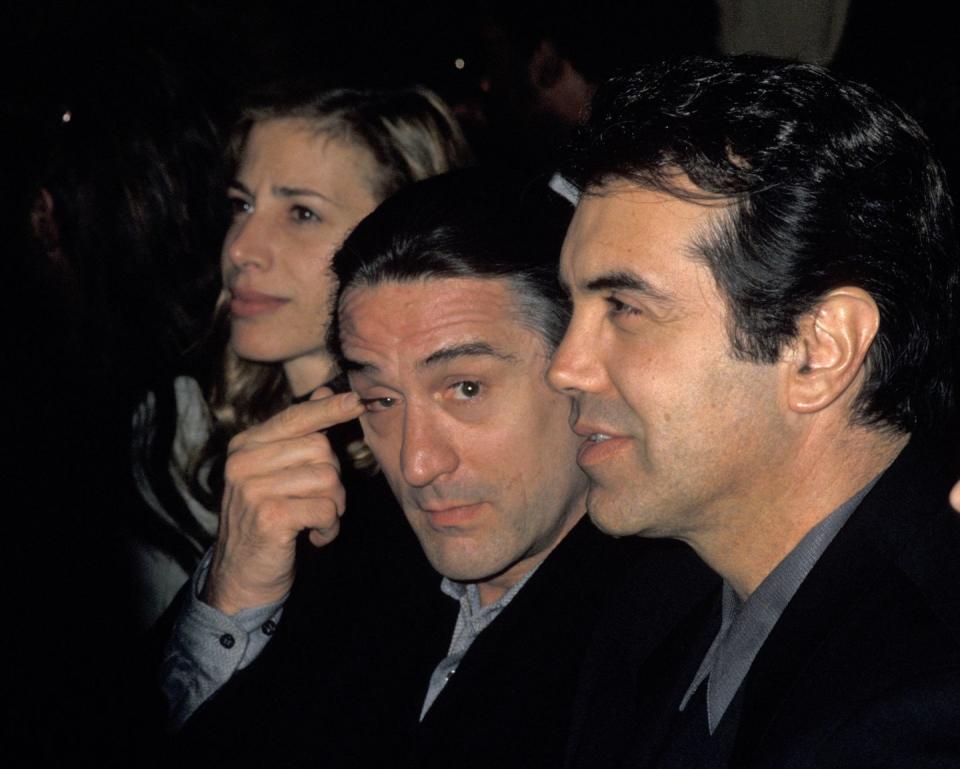
Why did you decide to do Unzipped and was the story arc evident from when you started shooting?
We started because if you had been in that studio for five minutes, you would've said, "Oh, someone should get a camera in here because this is unbelievable." When I was a kid, I adored used to hear about Halston, who had this this wonderful little building and hosted these kinds of salons. He had all these fabulous people coming to lunch and just staying for a fitting and blah, blah, blah. So, as an adult, when I finally started my own thing, I encouraged that kind of thing. I had all amazing people in and out of that studio. Sandra, and all kinds of dancers, and Mark Morris, and all kinds of unbelievable writers, and artists. Laurie Simmons, and Cindy Sherman and the great Alex Katz. His wife Ada really liked my clothes. There was always some supermodel in a fitting while you had, I don't know, some funny guest, like Liza, in the room kind of watching. It was always some incredible juxtaposition. Linda is not an unfunny person. She's hilarious. Christie is pretty adorable and funny. She talks about really smart things. It behooved us to shoot this movie, right? There are a million different reasons why we started, but we started.

We crafted this short version of it, and I did this event in L.A. at Grauman's Chinese Theatre and we showed a bit of it and it was a big, big, big, big success. We ended up taking it to the Sundance Film Festival in time to win the audience award. Once that happened, we were able to sell it very easily. It actually had a theatrical release. I remember I was sitting at a dinner party at Anna Wintour's house next to the great Joan Didion and her husband John Gregory Dunne. I swear to you, I was sitting there and she said to me, "Your movie." And I was like, "Are you talking to me?" And she's like, "Me and John were in L.A. and we were in this little theater, which was playing it. We went inside and it was actually packed in the middle of the day and we loved it." I mean, this is Joan Didion in Los Angeles going to a Loews. You know what I mean?
It had so much star power in it just naturally.
Exactly, exactly, exactly, exactly. I mean, because if it wasn't enough that you had Linda in the room, you had Kyle MacLachlan in the room with her or something. And plenty of it was cut. There was a scene with Faye Dunaway that was cut, sadly, because I guess she didn't like it. We wanted to intercut that thing with Whatever Happened to Baby Jane? We did this whole thing with Faye Dunaway and we sort of intercut it with footage from Mommy Dearest and I guess she just didn't think she wanted that. She owns the rights to Mommy Dearest.

You can't swing a cat without hitting a fashion documentary in the last 10 years. A lot of them aren’t great but Unzipped still stands up. Why do you think that is?
I think because we had no end use for it. It was made as a joke, as a lark, as an artwork. As opposed to, as a promotion for Vogue, like The September Issue or something. That was the only reason they made that was so they could sell more issues of Vogue, right?
There are so many good lines. Do you have any favorites?
You know who is a poet is Polly Mellen. Boy, she opens her mouth and just says the funniest things in the damn world, right? She's like, "Be careful of makeup. Angelica Huston and those long earrings — No." I mean, she's crazy, right? It's so funny. It's almost like the lyrics to a great song or something. It stays in your head all that stuff, like, "Y'aren't ever going to leave here, Blanche." What I like about the movie is that it's not really over-told. There's a lesson in how to tell a story in a very charming way.
What is your relationship to fashion right now? Are you watching anything? Are you interested in anything? Do you think anyone's good?
Definitely. I think so much of it is good. I am so in awe and so incredibly inspired by people showing clothes right now. I noticed Carolina Herrera had some kind of a showing recently and it was beautiful. The thing I like is this person called Ronald van der Kemp. I like his clothes a lot. I find them to be very kind of witty. I really like what Marc Jacobs is doing right now and Prada. It all looks like a polo shirt and a pleated skirt—I'm really into that. I just like it because it's the opposite of monster platforms that are all encrusted. It's the opposite of drag.
You Might Also Like


